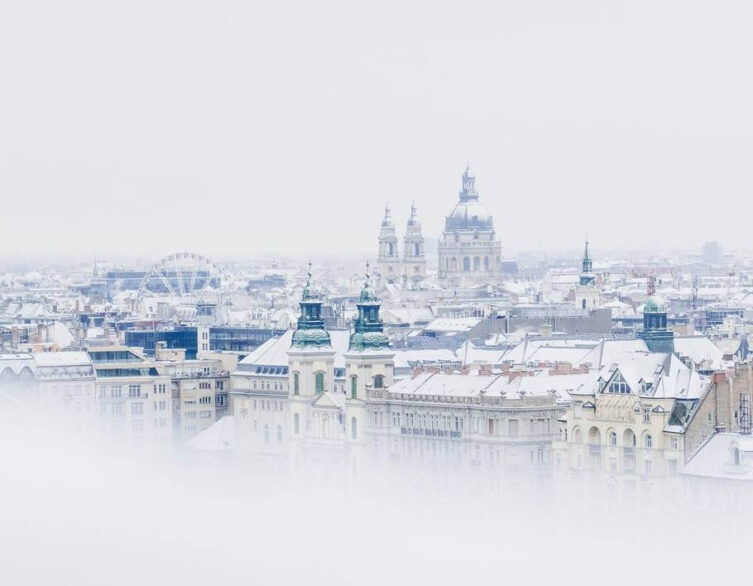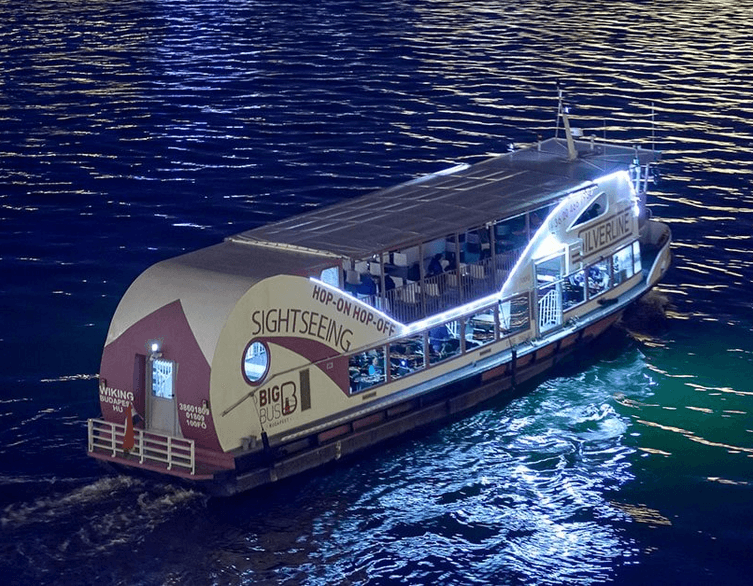Arctic Blast Heading for Budapest: What Travelers Need to Know About the Coming Cold Snap

If you’re planning to visit Budapest in the coming days, you’ll want to pack a few extra layers. Hungary is bracing for a dramatic weather shift that will transform the current damp, grey conditions into a genuine taste of winter, complete with Arctic temperatures, frost, and even the possibility of snow. For travelers hoping to experience the city’s emerging winter attractions, this cold front brings both challenges and opportunities for an authentic Central European winter experience.
The Weather Rollercoaster Begins
Sunday’s foggy, overcast conditions represent the calm before the storm. While some southwestern areas might see temperatures climb to a pleasant 14–21°C where the sun manages to break through, the fog-bound northern regions will remain cooler, hovering between 7–13°C. This relatively mild, if grey, weather won’t last long. By Sunday evening, rain will begin creeping into northwestern and northern Hungary, marking the beginning of a significant atmospheric transformation.
Monday brings the real drama. A wavering cold front will sweep across the country, splitting Hungary into two distinct weather zones. Northwestern areas can expect cool, rainy conditions with temperatures between 8–14°C, while the southeastern regions might still enjoy occasional sunshine and warmth ranging from 15–21°C thanks to lingering southerly winds. But don’t let this temporary warmth fool you—change is coming for everyone.
The rainfall on Monday could be substantial, with northwestern areas potentially receiving more than 20 millimeters of precipitation within just 24 hours. Southern and southeastern regions won’t escape either, facing showers and thunderstorms that may bring hail or sudden downpours. What makes this weather event particularly noteworthy is the wind. Initially blowing from the southwest and south, the wind will dramatically shift to the northwest by Monday evening, with stormy gusts affecting many areas. These strong winds signal the arrival of much colder air pushing in from the north.
Arctic Air Sweeps Across Europe
By Tuesday, the immediate front will have passed, allowing sunshine to return to many areas, though eastern regions might still see light rain or showers. This reprieve is brief, however, as Tuesday marks the beginning of a more significant change. From midweek onward, an intense Arctic cold spell will reach not just Hungary, but much of Europe. A blocking high-pressure system over the North Atlantic is reshaping the continent’s weather patterns, replacing the usual mild westerly winds with a far colder northerly air mass.
This Arctic blast follows a predictable path across Europe. France and Germany will feel the cold first, before it spreads to Central Europe around Wednesday, bringing freezing temperatures to Hungary. Current weather models paint a chilly picture for the latter half of the week. Between Wednesday and Friday, overnight temperatures in many parts of Hungary are expected to drop to between -3°C and -7°C. The coldest conditions will likely settle over the Alpokalja region in western Transdanubia and higher elevations, though frost is expected virtually everywhere.
Morning temperatures on Wednesday could dip below freezing across the country, with daytime highs struggling to reach only 5–10°C. Thursday continues this cold trend, with widespread cloud cover and scattered rain, and temperatures ranging from just 4–13°C. According to current forecasts, this Arctic cold snap will persist through the end of the week, making it the coldest period of the year so far for much of Europe.
Will Budapest See Snow?
The question on every winter enthusiast’s mind is whether this cold front will bring snow to Budapest. The answer is complicated. The incoming Arctic air could indeed turn rain into sleet or light snow at times, but significant snow accumulation is expected mainly in mountainous regions like the Alps, Pyrenees, and Scandinavia. In the Hungarian lowlands, including Budapest, only brief and weak snowfall is likely.
Historical weather data shows that snowfall in Hungary during November is quite rare, with fewer than two snowy days on average. For November 2025 specifically, forecasts suggest only one potential snowy day toward the end of the month, around November 29. While the dramatic temperature drop creates conditions for snow, the relatively dry air mass and Budapest’s lower elevation make substantial accumulation unlikely. Visitors might see flurries dancing in the cold air, but they probably won’t wake up to a winter wonderland.
Best deals of Budapest
Preparing for the Cold: What to Pack
For travelers already in Budapest or arriving during this cold snap, proper preparation makes all the difference between a miserable experience and a memorable winter adventure. When temperatures can drop to -7°C overnight and struggle to rise above freezing during the day, layering becomes essential.
Start with thermal base layers—thermal underwear for both upper and lower body creates a foundation of warmth that makes everything else more effective. Over this, add long-sleeved shirts or sweaters. Dark fleece leggings or thick trousers work well for legwear, providing both style and substance. The key is creating multiple insulating layers that trap warm air while allowing you to adjust as you move between Budapest’s cold streets and heated indoor spaces.
Your outer layer deserves special attention. A weather-resistant winter coat that extends to mid-thigh offers crucial protection, particularly in areas near the Danube River where wind can be fierce. A padded down jacket or dense woolen coat works well, and water resistance proves invaluable when dealing with rain, sleet, or snow. Remember that Budapest’s museums, cafes, and thermal baths are well-heated, so you’ll be putting on and taking off your coat frequently throughout the day.
Don’t neglect accessories, which often make the difference between comfortable exploration and cutting your sightseeing short. A warm hat or beanie, thick scarf, insulated gloves or mittens, and heavyweight socks are non-negotiable. For footwear, waterproof boots with good insulation and traction will serve you far better than fashionable but flimsy shoes. Budapest’s streets can be slippery when wet or icy, and you’ll be walking extensively to see the city’s attractions.
Making the Most of Winter Weather
Rather than viewing this Arctic blast as an inconvenience, consider it an opportunity to experience Budapest in its authentic winter character. The cold weather creates the perfect excuse to enjoy the city’s famous thermal baths, where the contrast between frigid air and steaming mineral water creates an almost otherworldly experience. The Széchenyi and Gellért baths become particularly atmospheric when outdoor temperatures plunge, with clouds of steam rising dramatically into the cold air.
The timing of this cold front also coincides with the opening of Budapest’s winter attractions. The iconic Városligeti Műjégpálya ice rink in City Park is preparing to open during the week of November 24, and the cold temperatures will ensure excellent ice conditions. The Winter Park and Christmas Market at City Hall Park opened on November 14, offering warming mulled wine, hot chocolate, and traditional Hungarian street food—exactly what you need when temperatures drop below freezing.
Indoor activities gain special appeal during severe cold snaps. Budapest’s museums, including the Hungarian National Museum and House of Terror, provide engaging experiences in heated comfort. The Hungarian State Opera House offers world-class performances in an opulent setting, while the city’s historic cafes invite you to linger over coffee and pastries while watching frost patterns form on the windows outside.
Looking Ahead
As this Arctic air mass settles over Hungary, the transition from autumn to winter becomes unmistakable. The persistent grey fog and damp conditions of recent days will give way to crisp, clear cold that makes the city’s baroque architecture stand out in sharp relief against blue skies. While the temperature drop might seem severe, it’s actually within the normal range for late November in Budapest, where winter temperatures typically hover between -4°C and 3°C.
For visitors, this weather change offers a glimpse of Budapest as locals experience it during winter—bundled against the cold, seeking warmth in thermal baths and cozy cafes, and appreciating how the city transforms when frost coats its monuments and parks. With proper preparation and the right attitude, this Arctic blast becomes not an obstacle to your Budapest adventure, but an integral part of experiencing the city’s winter character.
















